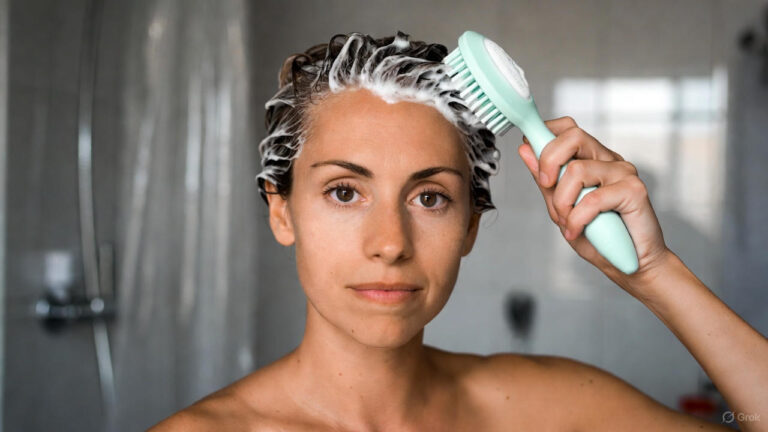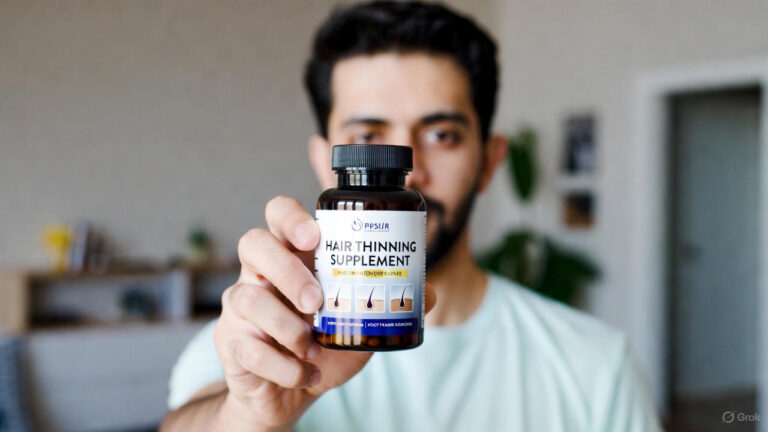Beauty rituals are an integral part of human culture, transcending borders and time. They serve as a fascinating window into the values, beliefs, and aesthetics of different societies.
We will embark on a global exploration of beauty rituals around the world. From the ancient practices rooted in tradition to the modern trends shaping beauty standards, you’ll uncover the rich tapestry of beauty customs.
I. African Beauty Rituals
Traditional African Beauty Practices
Africa’s beauty traditions are as diverse as the continent itself. Ancient African beauty practices encompass a variety of rituals, including body painting, tribal scarification, and elaborate hairstyles.
Africa’s beauty rituals are incredibly diverse, reflecting the multitude of cultures within the continent. Ancient practices include body painting, tribal scarification, and elaborate hairstyles, each with unique cultural significance.
Unique Hairstyles, Body Art, and Skincare Traditions
African beauty extends to stunning hairstyles, intricate body art, and skincare secrets. Styles such as dreadhair and intricate braids are not only fashionable but also carry deep cultural meaning.
African beauty traditions embrace a wide array of hairstyles, intricate body art, and skincare rituals. Styles like dreadhair and intricate braids not only express individuality but also carry profound cultural symbolism.
The Cultural Significance of Beauty in Africa
In Africa, beauty is more than skin deep; it is a reflection of cultural identity and heritage. Beauty rituals play a pivotal role in preserving and passing down these rich traditions.
Beauty in Africa goes beyond aesthetics; it embodies cultural identity and heritage. Beauty rituals are a means of preserving and passing down these rich traditions, underscoring their profound cultural significance.
II. Asian Beauty Rituals
Traditional Asian Beauty Practices
Asia is renowned for its ancient beauty practices, including skincare routines, makeup traditions, and ceremonies like the Japanese tea ceremony. These rituals often date back centuries.
Asia boasts a rich history of beauty practices, from skincare routines and makeup traditions to elaborate ceremonies like the Japanese tea ceremony. Many of these rituals have been cultivated for centuries.
Skin Care Routines, Makeup Trends, and Traditional Ceremonies
Asian beauty rituals emphasize clear, youthful skin. The meticulous skincare routines, innovative makeup trends, and traditional ceremonies showcase the importance of beauty in Asian cultures.
Asian beauty places great importance on clear, youthful skin. Meticulous skincare routines, innovative makeup trends, and traditional ceremonies highlight the role of beauty in Asian cultures.
The Influence of Asian Beauty Rituals on the Global Beauty Industry
Asian beauty trends have had a significant impact on the global beauty industry. The rise of K-beauty and J-beauty has led to a more holistic approach to skincare and makeup worldwide.
The influence of Asian beauty rituals on the global beauty industry cannot be overstated. The popularity of K-beauty and J-beauty has revolutionized the beauty landscape, emphasizing a holistic approach to skincare and makeup across the globe.
III. Middle Eastern Beauty Rituals
Traditional Middle Eastern Beauty Practices
The Middle East boasts a rich history of beauty practices, including intricate henna art, ancient skincare secrets, and fragrance traditions. These rituals reflect the region’s opulence.
The Middle East has a rich history of beauty practices, including intricate henna art, ancient skincare secrets, and exquisite fragrance traditions. These rituals reflect the region’s opulence and cultural heritage.
Intricate Henna Art, Ancient Skincare Secrets, and Fragrance Traditions
Middle Eastern beauty rituals encompass stunning henna art, luxurious skincare secrets, and a deep appreciation for fragrances. These practices are deeply rooted in tradition.
Middle Eastern beauty rituals encompass exquisite henna art, luxurious skincare regimens, and a profound appreciation for fragrances. These practices are deeply rooted in tradition and symbolize beauty and cultural identity.
The Connection Between Middle Eastern Beauty and Cultural Identity
Beauty rituals in the Middle East are closely linked to cultural identity and self-expression. They play a significant role in shaping the image of the region.
In the Middle East, beauty rituals are closely tied to cultural identity and self-expression. They hold immense significance in shaping the image and representation of the region.
IV. South American Beauty Rituals
Traditional South American Beauty Practices
South America boasts a rich tapestry of beauty rituals, including vibrant body painting, indigenous skincare remedies, and natural beauty traditions that have been passed down through generations.
South America is home to a diverse array of beauty rituals, including vibrant body painting, indigenous skincare remedies, and natural beauty traditions that have been preserved and passed down through generations.
Vibrant Body Painting, Indigenous Skincare Remedies, and Natural Beauty Rituals
Beauty rituals in South America often involve vibrant body painting, drawing on indigenous skincare remedies, and celebrating natural beauty. They reflect the rich tapestry of cultures within the continent.
South American beauty rituals frequently incorporate vibrant body painting, indigenous skincare remedies, and an appreciation for natural beauty. These practices are a reflection of the diverse cultures within the continent.
How Beauty Reflects the Diverse Cultures of South America
Beauty rituals in South America mirror the diversity of the continent’s cultures. They embody unique traditions and values, preserving the essence of South American heritage.
Beauty rituals in South America are a reflection of the continent’s diverse cultures. They embody unique traditions and values, preserving the essence of South American heritage and cultural diversity.
V. European Beauty Rituals
Traditional European Beauty Practices
Europe has a long history of beauty rituals, with various regions emphasizing different aspects of beauty. Historical beauty ideals, iconic hairstyles, and classic skincare routines are part of European tradition.
Europe has a rich history of beauty rituals, with various regions emphasizing different aspects of beauty. From historical beauty ideals to iconic hairstyles and classic skincare routines, beauty is deeply ingrained in European tradition.
Historical Beauty Ideals, Iconic Hairstyles, and Classic Skincare Routines
European beauty ideals have advanced over the centuries. Iconic hairstyles, such as the French bob, and classic skincare routines, like the Nordic sauna, have left a lasting impact.
Over the centuries, European beauty ideals have advanced, leaving a lasting impact. Iconic hairstyles, such as the French bob, and classic skincare routines, like the Nordic sauna, are part of Europe’s rich beauty heritage.
The Evolving Concept of Beauty in European Cultures
In modern Europe, the concept of beauty is continually changing, reflecting changing societal values. Diverse cultural influences have shaped a more inclusive and dynamic beauty landscape.
In contemporary Europe, the concept of beauty is in a constant state of evolution, reflecting changing societal values. Diverse cultural influences have contributed to a more inclusive and dynamic beauty landscape.
VI. Oceanic Beauty Rituals
Traditional Oceanic Beauty Practices
The indigenous peoples of Oceania have distinct beauty practices, including unique body art, island skincare secrets, and tribal beauty traditions that honor the region’s natural wonders.
The indigenous peoples of Oceania have distinct beauty practices, encompassing unique body art, island skincare secrets, and tribal beauty traditions that celebrate the region’s natural wonders.
Unique Body Art, Island Skincare Secrets, and Tribal Beauty Traditions
Oceanic beauty rituals involve unique body art, island-inspired skincare remedies, and tribal practices that pay homage to the region’s natural beauty. These customs hold deep cultural meaning.
Oceanic beauty rituals encompass unique body art, skincare remedies inspired by the islands, and tribal practices that pay homage to the region’s natural beauty. These customs hold profound cultural significance and reflect a deep connection to the environment.
VII. North American Beauty Rituals
Traditional North American Beauty Practices
North America has a rich history of beauty practices, including indigenous beauty rituals, modern skincare trends, and the influence of diverse cultures on beauty standards.
North America has a diverse range of beauty practices, from indigenous beauty rituals to modern skincare trends. The influence of diverse cultures has shaped the region’s beauty standards, resulting in a dynamic beauty landscape.
Indigenous Beauty Rituals, Modern Skincare Trends, and Cultural Influences
Indigenous beauty rituals are deeply rooted in North American culture. Modern skincare trends emphasize self-care, and the cultural influences on beauty standards are ever-changing.
Indigenous beauty rituals are deeply rooted in North American culture. Modern skincare trends emphasize self-care and well-being, while cultural influences continue to shape beauty standards, creating an ever-changing beauty landscape.
Conclusion
We are left with a profound appreciation for the diversity, history, and cultural significance of these practices. Beauty is more than skin deep; it is a reflection of the values, traditions, and aesthetics that define different societies. From Africa’s vibrant body painting to Asia’s holistic skincare routines, from the Middle East’s fragrance traditions to Europe’s changing beauty ideals, beauty rituals unite us in celebrating our unique identities and cultural heritage.
Frequently Asked Questions (FAQs)
1. What are some beauty rituals?
Beauty rituals are practices or routines aimed at enhancing physical appearance and well-being. They can include skincare routines, makeup application, body art, and other cultural practices.
2. What is the meaning of beauty rituals?
Beauty rituals hold cultural and personal significance. They reflect cultural values, aesthetics, and identity, and they often play a role in enhancing self-esteem and overall well-being.
3. What is a facial ritual?
A facial ritual is a skincare practice that involves cleansing, exfoliating, and moisturizing the face to maintain healthy and radiant skin.
4. What were the ancient skincare practices?
Ancient skincare practices varied by culture but often included natural ingredients like oils, herbs, and minerals to cleanse, protect, and beautify the skin.
5. How did ancient Egyptians treat acne?
Ancient Egyptians used various natural remedies, including a combination of oils and minerals, to treat skin conditions such as acne.
6. What was the Egyptian skincare routine?
The Egyptian skincare routine included cleansing with natron (a natural salt), followed by moisturizing with oils like castor oil or sesame oil to maintain healthy skin.
7. What was Cleopatra’s secret of beauty?
Cleopatra was known for her beauty, and her secret likely included skincare practices, including milk and honey baths and the use of oils to nourish her skin.
8. What is the secret of Egyptian beauty?
The secret of Egyptian beauty lay in their skincare practices, which involved natural ingredients like oils, minerals, and plant-based products to maintain healthy skin.
9. How did Cleopatra wash her face?
Cleopatra’s skincare routine may have included washing her face with a mixture of water and natron (a natural salt) to cleanse and purify the skin.
10. Why did Cleopatra wear lipstick?
Lipstick in ancient Egypt was not only a cosmetic but also a symbol of social status and beauty. Cleopatra likely wore it for its cultural significance and to enhance her appearance.
11. Did Cleopatra use tampons?
Historical records suggest that ancient Egyptian women may have used papyrus tampons as a form of menstrual protection.
12. Which queen bathed in milk and honey?
Cleopatra, the Egyptian queen, is often associated with bathing in milk and honey as part of her beauty regimen. This practice was believed to nourish and soften the skin.



